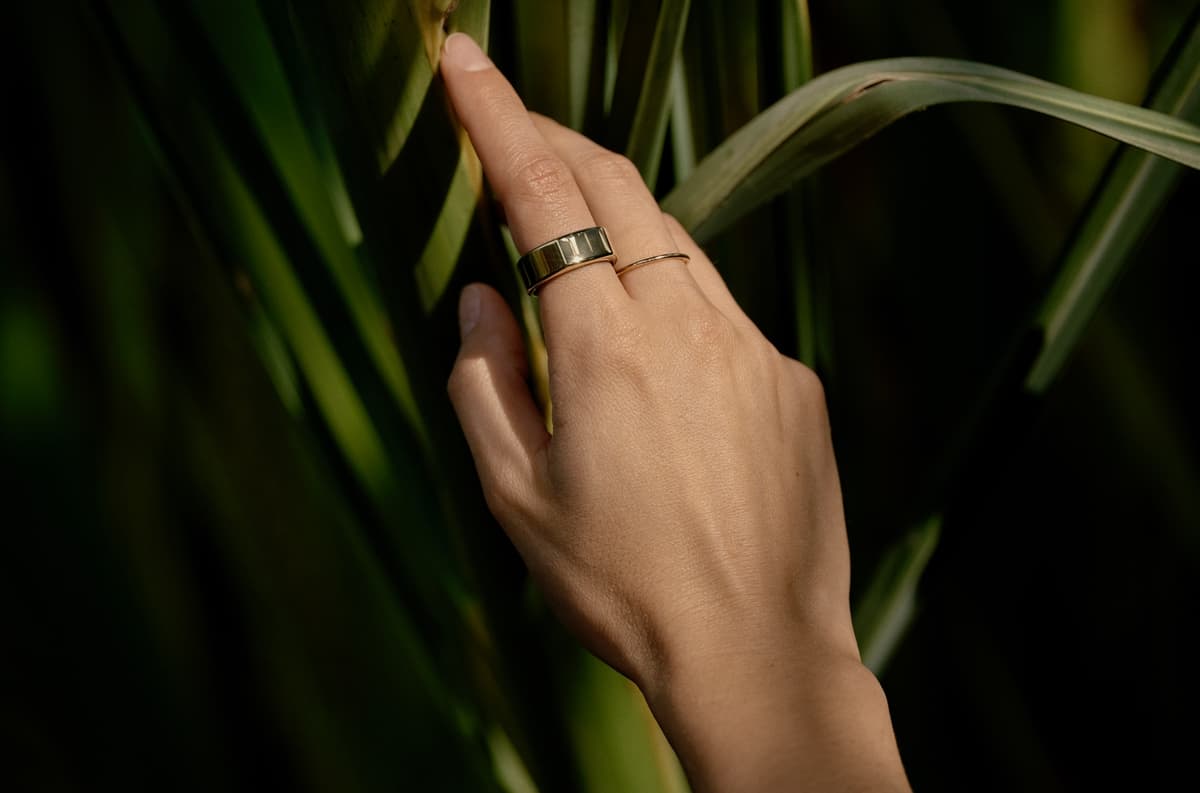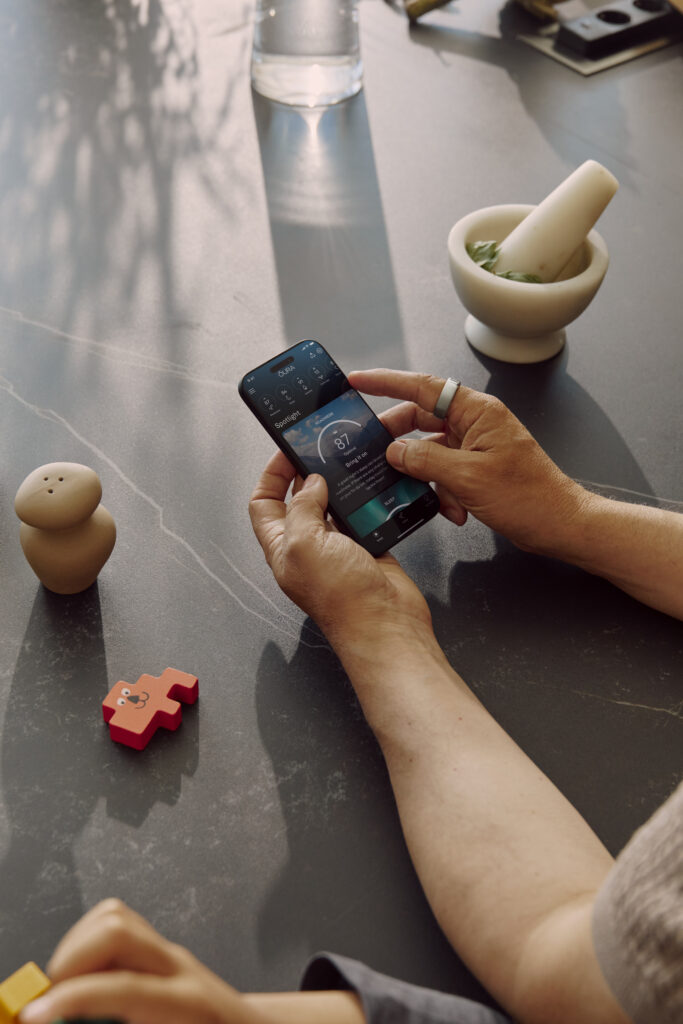Review: Oura Ring 3
It’s subtle, accurate, extremely helpful for improving your health, and it’s on sale now.

For about a year, I’ve been on a personal mission to try as many wearable devices as possible. The reason is simple: I should love wearables, but haven’t. I love the idea of wearing a smart device that measures your health metrics, physical performance, and so forth, and then provides personalized recommendations for you based on it; I hate wearing a smart watch. It’s not just that you then can’t wear a proper watch on your wrist; it’s that they’re another screen to distract you, mirroring the notifications of your phone so that you’re hit with them twice instead of once.
More significantly, I have yet to find something important that you can only do on the screen of a smart watch that you can’t on a phone. The best I’ve come up with is using it as a remote shutter for taking group pictures on your phone, or having a vibrating alarm on your wrist. The former is rarely used; the latter is great, dependent on you being able to sleep while wearing a smartwatch.
So, what I’ve been looking for is a non-watch device, that provides the benefits of a smartwatch. There are Fitbit smart bands, which have small screens for your daily steps and so forth, which can’t distract; they’re also pretty unattractive, and the data they provide is pretty slight. It’s essentially just a pedometer, and the phone in your pocket already does that, and pretty accurately.
Then there’s Whoop; the fabric band on your wrist, which tracks your performance. This is better — it has no screen, and provides accurate metrics — in my testing, is best for athletes, and isn’t set up to provide useful information on your daily health. Also, you can either wear a black fabric band, which is ugly, or a more stylish version, like a white one, which will look disgusting in little time.
The NoWatch got close to what I was looking for. Pronounced “No Watch,” it has the health and activity tracking of a smart watch, without a screen, and any distraction — and it’s only improved further since I reviewed it, with better metrics. I really enjoyed using it, and it’s the easiest device to move to from a smartwatch, particularly if you like its premium look and focus on wellness. The tracking is manual, it’s an expensive device, and it’s more focused on mindfulness and reducing stress than scientific health metrics.
And that’s where the Oura Ring 3 steps in; and it’s not just the best wearable I’ve ever tried, one of the best pieces of tech I’ve tried and bought this year.\

For the unfamiliar, the Oura Ring looks basically like a chunky metal ring, sold in a variety of colors; the inside has three little bumps, placed against the backside of the finger, tracking heart rate, body temperature, blood oxygen, as well as your activity and sleep. Because the ring is placed to your finger, with the sensors against the soft inside, the tracking is more accurate than that on a smartwatch, which tracks against the outside of your wrist, while also being unintrusive. If you’ve ever struggled sleeping with a smartwatch, this tracks sleep with more detail, is just a ring on your finger. And again; there’s no screen here to distract you!
It’s worth noting that exercise tracking works a little different than on a smartwatch. Rather than turning on a start time for a select exercise on your smartwatch, and pressing off when you’re done, the ring will ambiently track when you start exercising, tracking your heartrate throughout, and calorie burn, and then present this information when you open the app. Some persons complain about it compared to a smartwatch, saying it’s less convenient, I totally disagree. Its estimates for when you started exercising are usually pretty accurate and so long as you remember when you started, you can just adjust the start time and duration when you open the app.
The way it interacts with its app is fantastic, as the ring only offloads the information it’s tracking to your phone when you open the app, saving battery, and the ring will last for about a week on a charge. And the data there is extremely helpful, providing guidance on when to rest, whether you should increase your exercise, when you should go to bed and what has been making your sleep worse, and so forth.
You can also use the app as frequently or infrequently as you want. If you wanted to open it once a week, to see how your performance is doing, you could; if you want to do it 20 times a day, logging everything you do with manual “tags,” so that it can provide you even more minute information on what’s impacting your performance, then go ahead.
I personally open it in the morning, when I wake up; during the day, to see what my step and activity count has been; and whenever I exercise, to make sure the information is in correctly, and what my calory burn was.
I love this ring, and Oura continues to add new tracking features to it; and though there is now a new Oura Ring 4, I’m not convinced the new version is worth the upgrade. The change is that the entire ring is metal now, including on the inside, and that it swaps the bump sensors for a more general tracking, aided by algorithms. Oura says this gives them more accurate tracking, I’m skeptical; and even so, it only comes in the fully round version now, rather than the flat front option available on the 3, which I prefer. And better yet, the 3 is on sale now, down to $299 from $349. Please get the sizing guide to see which fits you, choose a color and size, and you’re ready.
There’s only one big problem with it: the subscription. You pay $300 for a ring, and it is a paperweight unless you pay the $60 per year — or $6 per month — subscription. I think it is worth it, particularly for the constant updates and new features, it is frustrating.
If you want to pay outright, you have the Ultrahuman and Samsung smart rings too; the former doesn’t present data as helpfully, and has a worse app than Oura, whereas the latter is just a bad ring, particularly if you don’t have a Samsung phone. On the flip side, there are also more expensive, feature-rich tracking rings, like the Happy Ring; and though it seems good, I haven’t tried it yet, and you can’t buy that outright at all. It’s $300 as a subscription.
On balance, Oura is the best smart ring on the market; and it’s one of my favorite tech products of all time.

